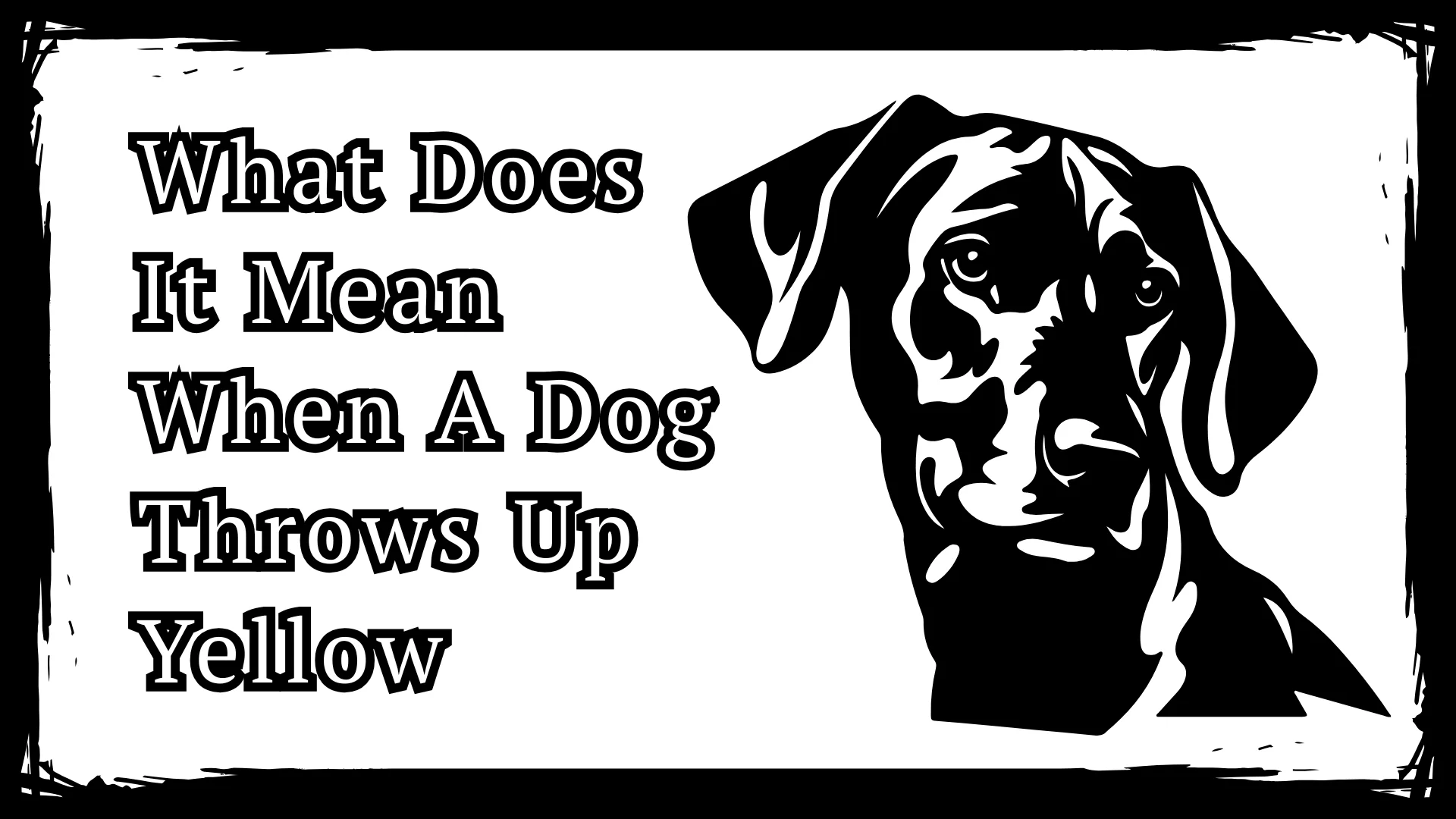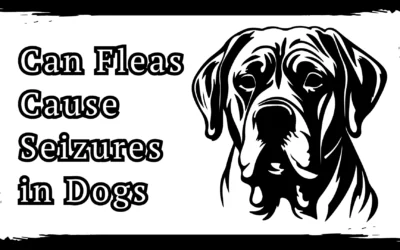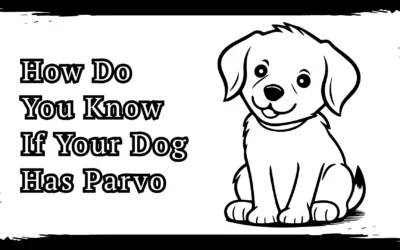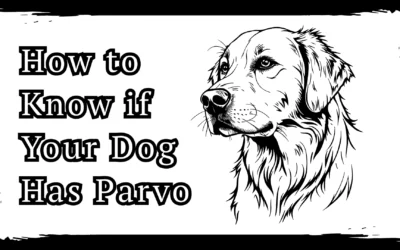Yellow vomit in dogs is a common concern for pet owners. It usually signals bile buildup, which can happen when the stomach is empty or irritated.
When a dog throws up yellow, it means bile is present due to an empty stomach, irritation, acid reflux, or gastrointestinal diseases. This can occur in the morning before the dog has eaten or after long gaps between meals.
Discover the common causes of yellow vomit in dogs and what it reveals about their health.
Dog Throwing Up Yellow
A dog throwing up yellow usually means bile is present from an empty stomach, irritation, or digestive issues. Frequent vomiting can signal underlying health problems.
Why Dogs Throw Up Yellow
Dogs throw up yellow when bile builds up in the stomach, often from being empty too long, irritation, acid reflux, or digestive problems like parasites or gastritis.
Read More: Why Is My Dog Throwing Up Yellow
Spotting Mild Cases
Mild cases of yellow vomit in dogs may happen occasionally when the stomach is empty, after eating grass, or from minor irritation. Usually, it passes quickly.
Recognizing Serious Cases
Serious cases of yellow vomit include frequent vomiting, refusal to eat, weight loss, weakness, or signs of pain. These may point to infections, liver, kidney, or gastrointestinal diseases that need urgent attention.
Common Causes Of Yellow Vomit In Dogs
- Empty stomach or bile buildup
- Acid reflux or stomach irritation
- Intestinal blockage
- Parasites or infections
- Gastritis or ulcers
- Pancreatitis
- Liver or kidney disease
- Food allergies or dietary indiscretion
- Chronic digestive conditions like inflammatory bowel disease
What To Do

Step 1: Assess The Severity Right Away
Check how often your dog is vomiting, their energy level, appetite, and any other symptoms like diarrhea, weakness, or pain.
Step 2: Call Ahead For Emergency Care
If vomiting is frequent or paired with serious symptoms, contact an emergency clinic so they’re prepared when you arrive.
Step 3: Gather Basic Information Before Leaving
Note what your dog ate, when the vomiting started, how often it happened, and bring a sample if possible to help with diagnosis.
Potential Life-Threatening Conditions
- Intestinal blockage
- Severe pancreatitis
- Liver disease
- Kidney disease
- Infectious diseases
- Ulcers with internal bleeding
- Endocrine disorders (like Addison’s disease)
- Chronic gastrointestinal diseases
Helping Your Pet Before the Vet Visit
Offering Sips Of Water
Give small sips of fresh water to prevent dehydration, but avoid letting your dog drink too much at once.
Withholding Food Temporarily
Skip one meal to let the stomach settle. Reintroduce a bland diet slowly if vomiting stops, but seek help if symptoms continue.
Preventing Future Vomiting
Adjusting Meal Times
Feed smaller, more frequent meals to prevent bile buildup on an empty stomach and reduce the chances of yellow vomit.
Addressing Potential Allergies
Identify and remove possible food triggers. Switching to a limited-ingredient or hypoallergenic diet may help ease digestive irritation.
Dog Threw Up Yellow Liquid And Died
If a dog threw up yellow liquid and died, it may have been bile linked to a serious underlying issue. Yellow vomit in dogs can occur from bile buildup, stomach irritation, acid reflux, food allergies, or simply an empty stomach.
However, in severe cases, it may point to intestinal blockage, poisoning, pancreatitis, liver or kidney failure, or other life-threatening conditions. Sometimes, a dog may vomit yellow bile after eating something harmful outside or due to a hidden chronic illness. Sudden death after vomiting yellow is always a red flag of a critical condition.
Dog Vomiting Yellow Bile Not Eating What To Do
If your dog is vomiting yellow bile and not eating, it could mean the stomach is irritated, empty for too long, or affected by food intolerance, parasites, or a serious condition. Offer small amounts of water, try feeding smaller, frequent meals, and adjust their diet. If your dog continues to vomit, refuses food, or shows other symptoms, seek veterinary help immediately.
Must Read: Can I Give My Dog Gatorade For Vomiting
Why Is My Female Dog Throwing Up Yellow
Yellow vomit often signals bile in your female dog’s digestive system. This can happen when the stomach is empty, causing bile buildup and irritation. Sometimes, your female dog may simply be hungry, eat too fast, or eat more than she can handle. Other causes include food allergies or intolerance, intestinal blockage, or worse, liver disease.
Dog Vomiting Yellow Foam Treatment At Home
If your dog is vomiting yellow foam, start by withholding food and water for 12 hours to let the stomach rest. Then, offer small sips of water and gradually feed small portions of a highly digestible, low-fat, low-fiber diet.
Home remedies like licorice glycerine extract may soothe stomach irritation. In some cases, antacids, anti-nausea medications, or GI-protectant drugs can help, but these should only be given if prescribed.
Dog Throwing Up Yellow But Acting Normal
When a dog throws up yellow but seems normal, it’s usually bile from an empty stomach. This is called bilious vomiting syndrome (BVS) and often happens in the morning or between meals.
Dog Throwing Up Yellow Bile In Morning
A dog throwing up yellow bile in the morning usually means its stomach is empty. When the stomach is empty for a long time, bile irritates it and causes vomiting. This is common and often not serious if the dog is otherwise healthy and active.
Feeding smaller, more frequent meals or giving a small late-night snack can help prevent it. If vomiting happens frequently or the dog shows other signs like weakness, pain, or loss of appetite, see a vet.
What Should I Feed My Dog After Vomiting Yellow Bile
After your dog vomits yellow bile, offer a bland, easy-to-digest diet to calm the stomach. Good choices include boiled chicken with rice or lean ground beef, or turkey with rice. Feed small, frequent meals to prevent an empty stomach and reduce bile buildup.
You can fast your dog for 4–12 hours before slowly reintroducing food in small portions over a few days. Always provide small amounts of water to avoid dehydration, but don’t let them drink too much at once. Avoid fatty, spicy, or rich foods that may upset the stomach further.
If vomiting continues or your dog becomes weak, refuses food, or shows other symptoms, consult a veterinarian for proper care.
Also Read: How To Clean Dog Vomit
Yellow Dog Vomit Color Guide
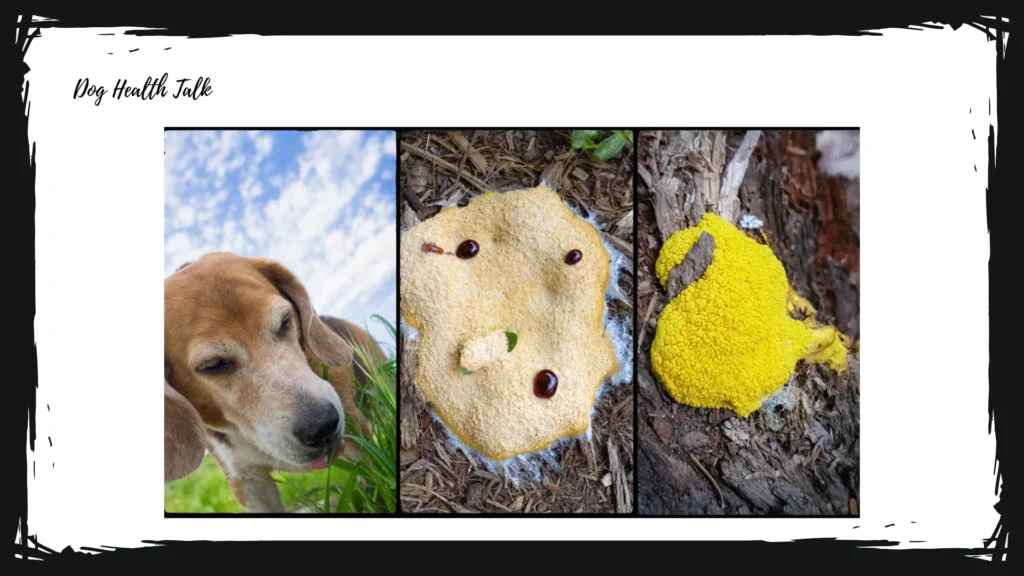
- Yellow: Often bile from an empty stomach. Common in morning vomiting or after not eating for a while. Usually not serious, but it can irritate the stomach lining.
- White Foam: May indicate acid reflux, digestive upset, or an empty stomach.
- Green: Could be bile or from eating grass or plants; sometimes linked to liver or gallbladder issues.
- Brown: May be partially digested food, feces, or blood. Coffee-ground-like brown vomit requires urgent veterinarian care.
- Red or Pink: Indicates blood and is a medical emergency—seek veterinary help immediately.
- Clear Liquid: Could be saliva or stomach secretions, often linked to nausea or indigestion.
FAQs
Should I Be Worried If My Dog Throws Up Yellow?
Occasional yellow vomit often means bile from an empty stomach. If vomiting is frequent, with weakness, pain, or appetite loss, consult a vet promptly.
What Color Of Dog Vomit Is Concerning?
Red, black, or coffee-ground vomit may indicate internal bleeding. Green, brown, or persistent yellow vomit can signal infection, poisoning, or organ disease and needs urgent care.
What Does Toxic Dog Vomit Look Like?
Toxic vomit may appear green, foamy, bloody, or contain foreign material. Signs like drooling, weakness, tremors, or collapse suggest poisoning and require immediate emergency treatment.
What Does Parvo Vomit Look Like?
Parvo vomit is often yellow, foamy, or brown, sometimes with blood. It usually accompanies foul-smelling diarrhea, lethargy, and dehydration, requiring urgent veterinary care.
When To Worry About Dog Vomiting?
Worry if vomiting is frequent, bloody, contains foreign objects, or comes with lethargy, diarrhea, loss of appetite, or dehydration. These signs suggest a serious illness needing treatment.
What Home Remedy Can I Give My Dog For Vomiting Yellow?
Offer small sips of water, fast for several hours, then feed bland meals like boiled chicken and rice. Persistent vomiting requires veterinary attention immediately.
How Many Times Should A Dog Throw Up Before Going To Vet?
If a dog vomits more than twice in 24 hours, or shows weakness, pain, diarrhea, or stops eating, contact a veterinarian immediately for evaluation.
What Is Pancreatitis In Dogs?
Pancreatitis is inflammation of the pancreas, causing vomiting, abdominal pain, loss of appetite, and lethargy. It can be life-threatening and requires veterinary care and management.
Which Dog Breeds Are Prone To Pancreatitis?
Breeds prone to pancreatitis include Miniature Schnauzers, Yorkshire Terriers, Cocker Spaniels, Dachshunds, and Poodles. Overweight dogs or those on high-fat diets also have a higher risk.
What Is Giardia In Dogs?
Giardia is a parasite that causes diarrhea, vomiting, weight loss, and dehydration in dogs. It spreads through contaminated water or feces and requires veterinary diagnosis and treatment.
Conclusion
In conclusion, yellow vomit in dogs is often a sign of bile buildup caused by an empty stomach, irritation, or underlying digestive issues. While occasional yellow vomiting can be harmless and managed with dietary adjustments like smaller, more frequent meals or bland food, frequent or severe vomiting accompanied by other symptoms may indicate serious health problems requiring veterinary attention.
Understanding the causes and signs can help pet owners respond appropriately, ensuring their dog receives timely care to maintain good health and prevent complications. Always monitor your dog’s condition closely and consult a veterinarian if vomiting persists or worsens.

